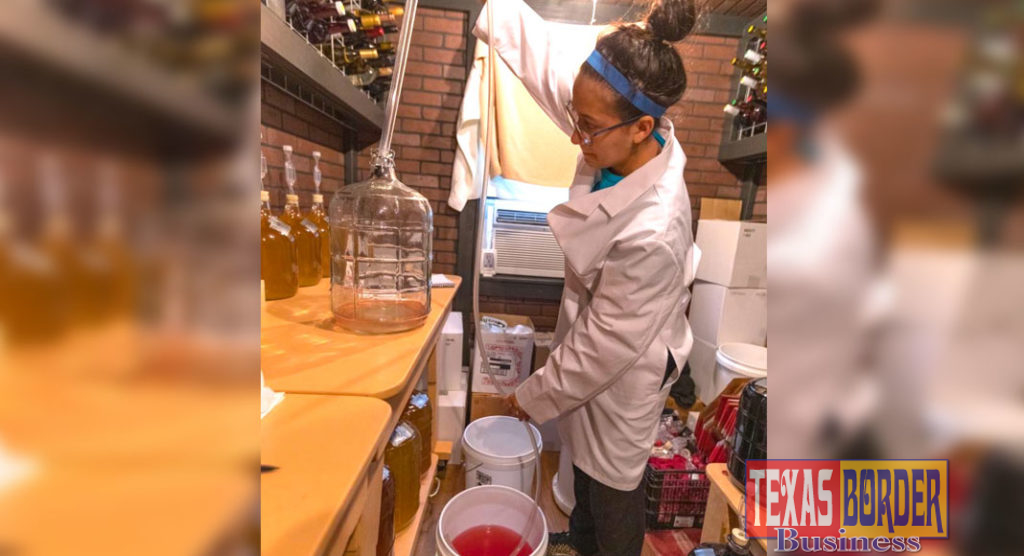
Texas Border Business
By Maria Elena Hernandez
Rio Grande Valley, Texas – In a small winery near Raymondville, bottles without formal labels line the wall. The tops are marked simply, with numbers written on red, green and yellow stickers.
What’s in the bottles is part of research underway at The University of Texas Rio Grande Valley.
“We do research into wine-making and trying to determine how to make the best wines out of the grapes that can be grown here in the Rio Grande Valley,” said George Bennack, executive director of rural business development and co-director for the UTRGV Center for Sustainable Agriculture and Rural Advancement.
The color-coded stickers identify the source of the wine and the batch number.
“Here in South Texas and along the Gulf Coast region, there are only a few hybrid grapes that can grow without dying from Pierce’s disease,” Bennack said.
Pierce’s disease can destroy grapevines. Blanc Du Bois is a white grape and resistant to the disease. Black Spanish grape, too, is resistant to Pierce’s disease. Both types are being used as part of UTRGV’s wine-making research.
“We’re also doing research on a red grape called Convent,” Bennack said. “It was originally developed in Brownsville, Texas, at a convent and used for sacrament over the decades there.”
Unfortunately, while these grapes are resistant to the disease that kills classic wine grapes, taste is a different matter.
“These particular grapes don’t make great wines,” he said, “so part of our research is to use the grapes that will grow in South Texas – both native varieties and these hybrid grapes – and try and develop the best possible wines that we can.”
The SARA co-director said there are only about a dozen grape growers in the Rio Grande Valley.
“It’s a challenging crop to grow, one, because of disease pressures. But it’s also labor-intensive,” Bennack said.
UTRGV’s wine research isn’t limited to grapes. Wines also were created from prickly pear and citrus.
“We enter these particular fruit ones into our (taste) trials, to see how they stack up against grape wines,” he said.
In 2018, the UTRGV wine research resulted in 60 different batches, and Bennack explained that one or two variables are changed in side-by-side trials to see which approach produces the best wine.
“Of course, wine taste is subjective, so that’s where the taste trials come in,” he said. “It’s a good idea to do the trials and get kind of
Last year, taste trials were held at an event at Rio Farms in Monte Alto. Another trial is expected to be held in April or May.
Bennack said the university’s wine research can benefit the Valley’s grape growers in two ways.
“They can sell their grapes to wineries that are farther north, into the Hill Country. Or they have the option of developing their own wineries and selling wine as a value-added product,” he said.














